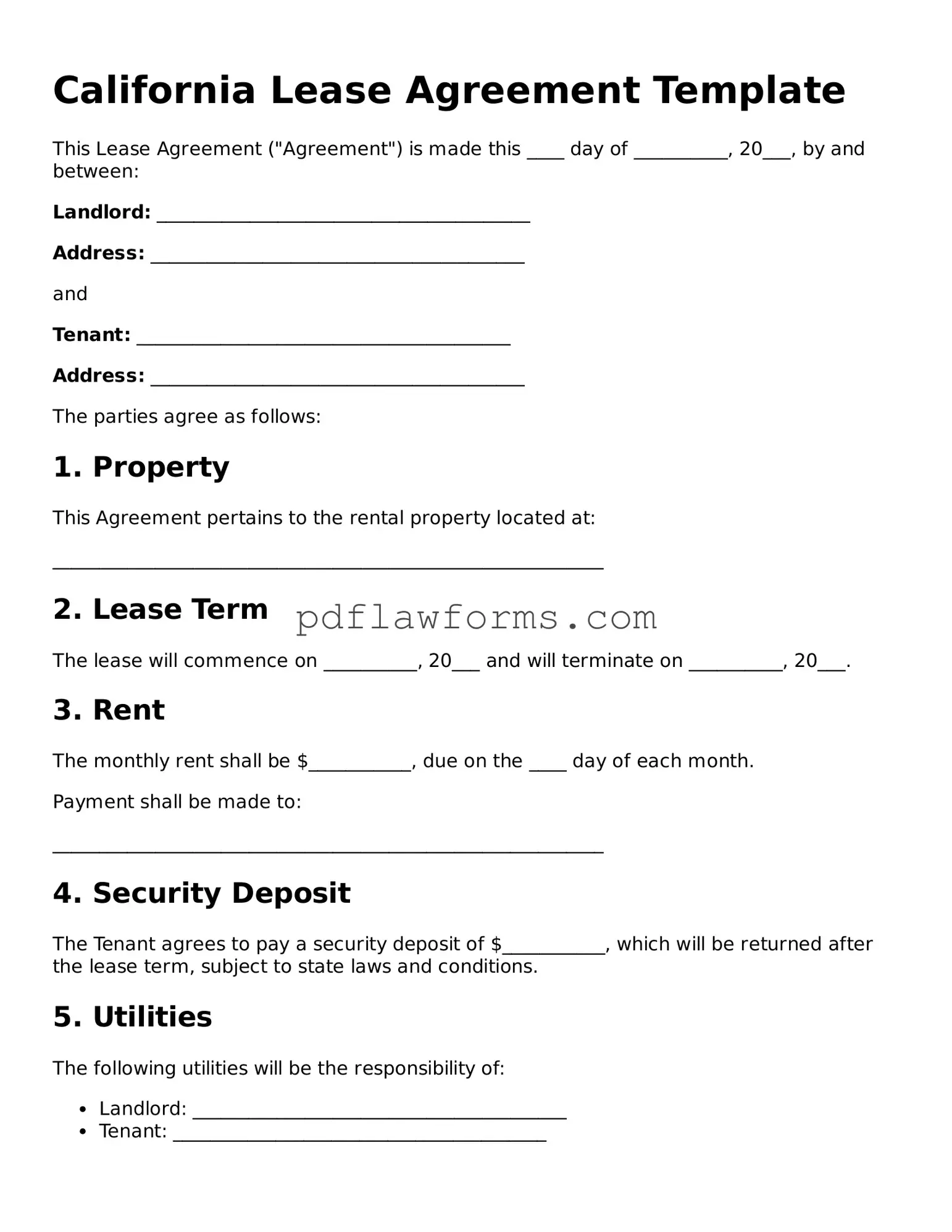When filling out the California Lease Agreement form, individuals often overlook critical details that can lead to misunderstandings or legal issues. One common mistake is failing to include the full names of all tenants. It is essential to list everyone who will reside in the rental unit. Omitting a tenant's name can create complications regarding responsibilities and rights under the lease.
Another frequent error is neglecting to specify the rental term. The lease should clearly state whether it is a month-to-month agreement or a fixed-term lease. Without this information, both landlords and tenants may face uncertainty about the duration of the rental arrangement.
People also often forget to document the rental amount and payment schedule. It is crucial to outline how much rent is due, when it is due, and acceptable payment methods. Leaving this information vague can lead to disputes over payment expectations.
Additionally, many individuals fail to address security deposits adequately. The lease should specify the amount of the security deposit, the conditions under which it may be withheld, and the timeline for its return. This oversight can result in confusion and potential legal challenges when the lease ends.
Another mistake is not including maintenance responsibilities. The lease should clarify who is responsible for repairs and maintenance of the property. If this is not addressed, tenants may assume the landlord is responsible for all repairs, leading to frustration and conflict.
Some people also overlook the importance of including pet policies. If pets are allowed, the lease should specify any restrictions or additional fees. Conversely, if pets are prohibited, this should be clearly stated to avoid misunderstandings.
Another common oversight is failing to include provisions for termination of the lease. The lease should outline the notice period required for either party to terminate the agreement. Without this clarity, tenants or landlords may find themselves in difficult situations when they wish to end the lease.
Moreover, individuals often neglect to review local laws that may impact the lease agreement. California has specific regulations regarding rental agreements that may require certain disclosures or provisions. Ignoring these laws can lead to unenforceable terms.
Lastly, many people do not keep a copy of the signed lease. It is vital for both landlords and tenants to retain a copy for their records. This document serves as a reference point in case of disputes and ensures that both parties are aware of their rights and obligations.
